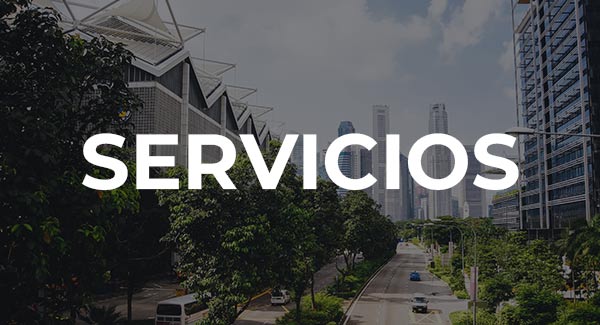The real estate sector, impacted by new consumer habits, demographic and social changes and a greater awareness of the need to take care of the planet, is going through a new era in which sustainability is key. Thus, the ESG (Environmental, Social and Governance) concept is increasingly present in all sector activities.
The concept of integrating ESG into the process of investment analysis, asset selection and valuation, portfolio management and optimization is now a fact of life for most of the world’s largest and most successful companies. investment and asset managerswhich in turn reflect the demands and preferences of institutional and individual investors.
In the Real Estate sector, the integration of ESG aspects in the process can be carried out at the level of the organization or entity, as well as at the level of the portfolio or individual assets.
In the case of organizations or entities that manage real estate, it is necessary to consider how they also integrate ESG into their acquisition, operation and maintenance and divestment processes. Also, the fact that they have a clear ESG culture, as well as an ESG strategy, ESG risk management and implementation of ESG aspects in operations throughout the cycle of the assets and portfolios managed (acquisition, management, divestment…). In turn, under G (Governance), all aspects of transparency and reporting are included (global ESG ratings such as those of Sustainalytics or GRI, or specialized in real estate such as GRESB).
Conducting a materiality analysis (ESG factors with financial impact on the stakeholders considered) for the entity or organization is the basis on which the ESG strategy is usually built, which will later lead to the implementation of specific plans.
In the case of specific portfolios or assets (real estate), the scope of the ESG audit should include some of the following aspects, depending on the materiality and ESG strategy analysis previously performed:
1. Environmental Assessment:
- Phase 1 ESA according to ASTM E 1527-13, which also includes, for example, materials containing asbestos, radon, lead-based paints, PBC, alumina cement, etc.
- Equipment controlled against air and water quality infection risks, such as Legionella or containing banned CFCs.
Natural disaster risks: Risks from earthquakes, tsunamis, water flood risks, risks from extreme weather.
3. Sustainability assessment:
3.1. Decarbonization: 20-year decarbonization roadmap with 1.5º C increment
(CREEM route): Determination of CO2 balance, final energy demand and primary energy demand for heat and electricity in kWh/m2 per year, based on energy performance certificates and/or values provided by the vendor. Realization of beaching diagrams.
3.2. Assessment of compliance with EU Taxonomy requirements, including criteria for Substantial Contribution to one of the environmental objectives, and No Significant Harm to the other environmental objectives, while ensuring Minimum Social Guarantees.
3.3 Pre-assessment of sustainable construction certificates (e.g., LEED, BREEAM, HQE, DGNB, GREEN).
3.4 Energy performance: Energy Performance Certificate (EPC), local thermal regulations and building compliance, Energy Monitoring Systems (EMS).
3.5. Carbon Footprint: calculation of the carbon footprint of existing buildings according to ISO 16745-1:2017 or other standards. As well as proposals for reduction and, if applicable, compensation.
3.6. Water management: optimization of potable water use, rainwater and gray water recovery, efficient irrigation systems.
4. Social Performance and Governance
This section will evaluate, among others, aspects related to:
4.1. Control and measurement of indoor air quality, as well as other aspects related to health and well-being.
4.2. Pre-assessment of health and wellness certificates such as WELL or FITWELL.
4.3. Accessibility of the building.
4.4. Mobility resources: Availability of public transportation, facilities for pedestrian or bicycle access, electric chargers, shared vehicles.
4.5. Community relations: Scheduled events for ESG discussion, support for local initiatives, communications on tenant services.
4.6. Transparency: Tenant satisfaction surveys, scheduled tenant meetings, ESG communications to tenants.
5. Other aspects
This may include those related to Smart Building (WiredScore connectivity certification, digital performance, etc.), or other environmental, social or governance aspects that have been key in the materiality analysis.
The process of an ESG audit would be as follows:
First, an analysis of existing data on the property is performed, followed by an on-site visit to collect and analyze all relevant information, which is as follows:
- Basic data of the property.
- Property description: footprint, year of construction, location and alignment, significant aspects of construction, major renovations.
- Responsibilities of the owner and the various contractors: maintenance, waste management, safety, etc.
- Description of construction: description of structures, facades, insulation, glazing, doors and windows, installations and equipment. Accessibility systems.
- Description of the owner’s building management policies.
- Description of operation and maintenance programs.
After the visit and the analysis of all the information, the audit report must be prepared, which will bring together all this information, providing the necessary recommendations for compliance with ESG regulations and objectives, as well as the CAPEX identified to meet these objectives.
It is important to note that an ESG audit can be performed both during the acquisition process (as part of the due diligence of the asset) and during the asset management phase. Both the buyer and seller of the property, as well as the property manager must be involved in the audit process, which will generate transparency as to the ESG compliance status and therefore support the Governance aspects that are also included within the ESG concept.
As can be seen, ESG auditing processes include a wide variety of aspects, which require specific expertise, and therefore will normally require the participation of several experts from the advisory or consulting organization, which must have proven experience in this type of process.
To date, Ineria Management has advised on a multitude of sale and purchase transactions, as well as real estate management, by performing ESG audits and ESG consulting specialized in the aforementioned aspects, contributing to the process of natural ESG integration in the life cycle of real estate assets.






